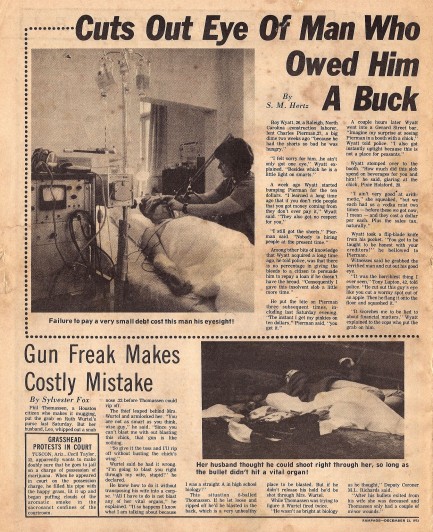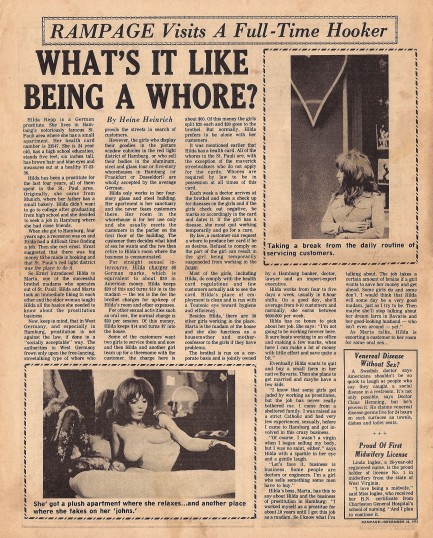 Live, survive, thrive—she covered the entire spectrum. 
Above is a lovely image of a person we guarantee you'll find very interesting. Her name is often given as Elizabeth Bagaaya, or Elizabeth Bagaya, but she's also known as Princess Elizabeth of Toro, and she's a Ugandan lawyer, diplomat, politician, and model—not in that order. Let's see if we can get her incredibly wild life story straight. First of all, Bagaaya was a princess because her mother was married to the King of Toro, an ancient kingdom that spanned not only Uganda, but parts of present-day Burundi, Rwanda, Tanzania, and Zaire. Next she was a brilliant student, the first black woman to win admission to the English Bar Association, and, in 1965, Uganda's first female lawyer. In 1967 the Ugandan government under Milton Obote abolished the monarchy and Bagaaya lost her title and became merely a person from a powerful family.
 In 1971 Idi Amin overthrew Obote and installed himself as dictator. Taking notice of Bagaaya, who in addition to her legal background had been modeling for a few years, he appointed her Minister of Foreign Affairs. He had an ulterior motive. He wanted her to become one of his wives. Her answer—a hard no. In 1971 Idi Amin overthrew Obote and installed himself as dictator. Taking notice of Bagaaya, who in addition to her legal background had been modeling for a few years, he appointed her Minister of Foreign Affairs. He had an ulterior motive. He wanted her to become one of his wives. Her answer—a hard no. Amin was displeased by her reticence, and placed her under house arrest. He allegedly had her hair forcibly shaved, and generally made her existence hell, all of which prompted her to escape to Nigeria. Just as an aside—Amin killed up to 300,000 people, maybe even more, but to get a sense of how dangerous he was in his personal life, consider the fact that his second wife, Kay, died under unknown circumstances and her body turned up dismembered, and his fifth wife, Sarah, had a previous boyfriend who vanished and is thought to have been beheaded. Amin wanted Bagaaya, but she was in no way safe because of that.
Anyway, moving on, some of Bagaaya's doings overlap, but the bulk of her modeling came after fleeing from Amin, and when she undertook that profession she gave it her all, becoming the first black woman to have a spread in Vogue, and the first to appear on the cover of Harper's Bazaar. As it was a chic thing for models to do at the time, she posed nude, with the results you see. She also acted, appearing in the films Things Fall Apart and Sheena—yeah, the one with Tanya Roberts. In 1979 she returned to Uganda because Amin was gone, and the country was having elections. She helped former president Obote win, later served as Uganda's ambassador to Germany and the Vatican, and was Uganda's High Commissioner to Nigeria. There's more, but why go on? What we've described, ladies and gentlemen, is called a life, one that is ongoing, as Princess Elizabeth remains an important figure, aunt of the current King of Toro, and an outsize and complex personality.

 New Yorkers get their kinks worked out. 
Rampage is shocked—shocked, they tell us—to find that sexual shenanigans are going on in New York City massage parlors. They bravely delve into the matter, telling readers, “Authorities evidently realized that the parlors were nothing more than cathouses operating under the guise of massage parlors. Now, where there once were about 200 parlors, only about five are left.” You have to wonder‚ why were any left? Well, police need a little deep tissue action once in a while too. We're big fans of puns and we have to give Rampage credit for this one: “But according to the owners of the joint, business is throbbing.”
Resident seer Mark Travis graces this issue with another installment of “I Predict.” We love these—there's nothing like reading predictions when you already know whether they came true. Since these were all published today in 1973 it's safe to say we know the outcomes. Among Travis's gems: “I predict a series of savage sex slayings in an eastern city will be solved with the arrest and confession of the slayer—an 11 year-old boy!” Here's another good one: “I predict the birth of quintuplets to a famous—or infamous—porno star.” Of course, Travis isn't always wrong. Here's one he nailed: “I predict videotape cassettes will soon become as common as phonograph records and that these cassettes will be the most common form of entertainment in American homes.” To put this in perspective, consider that the Betamax tape wasn't released in the U.S. until 1975, and the VHS tape didn't arrive until 1977. Spooooky.Rampage also gives readers advice for making it with ski bunnies, offers an in depth examination of the lives of prostitutes, reports that a Nigerian farmer fed his child who had died of starvation to the rest of his family, and tells the story of a man who had an eye cut out over a one dollar debt. We have a dozen scans below and many more issues of Rampage in the website. All you have to do check our handy alphabetical tabloid index.
|
 |

The headlines that mattered yesteryear.
1967—First Space Program Casualty Occurs
Soviet cosmonaut Vladimir Komarov dies in Soyuz 1 when, during re-entry into Earth's atmosphere after more than ten successful orbits, the capsule's main parachute fails to deploy properly, and the backup chute becomes entangled in the first. The capsule's descent is slowed, but it still hits the ground at about 90 mph, at which point it bursts into flames. Komarov is the first human to die during a space mission. 1986—Otto Preminger Dies
Austro–Hungarian film director Otto Preminger, who directed such eternal classics as Laura, Anatomy of a Murder, Carmen Jones, The Man with the Golden Arm, and Stalag 17, and for his efforts earned a star on Hollywood's Walk of Fame, dies in New York City, aged 80, from cancer and Alzheimer's disease. 1998—James Earl Ray Dies
The convicted assassin of American civil rights leader Martin Luther King, Jr., petty criminal James Earl Ray, dies in prison of hepatitis aged 70, protesting his innocence as he had for decades. Members of the King family who supported Ray's fight to clear his name believed the U.S. Government had been involved in Dr. King's killing, but with Ray's death such questions became moot. 1912—Pravda Is Founded
The newspaper Pravda, or Truth, known as the voice of the Communist Party of the Soviet Union, begins publication in Saint Petersburg. It is one of the country's leading newspapers until 1991, when it is closed down by decree of then-President Boris Yeltsin. A number of other Pravdas appear afterward, including an internet site and a tabloid. 1983—Hitler's Diaries Found
The German magazine Der Stern claims that Adolf Hitler's diaries had been found in wreckage in East Germany. The magazine had paid 10 million German marks for the sixty small books, plus a volume about Rudolf Hess's flight to the United Kingdom, covering the period from 1932 to 1945. But the diaries are subsequently revealed to be fakes written by Konrad Kujau, a notorious Stuttgart forger. Both he and Stern journalist Gerd Heidemann go to trial in 1985 and are each sentenced to 42 months in prison.
|

|
|

It's easy. We have an uploader that makes it a snap. Use it to submit your art, text, header, and subhead. Your post can be funny, serious, or anything in between, as long as it's vintage pulp. You'll get a byline and experience the fleeting pride of free authorship. We'll edit your post for typos, but the rest is up to you. Click here to give us your best shot.

|
|


 In 1971 Idi Amin overthrew Obote and installed himself as dictator. Taking notice of Bagaaya, who in addition to her legal background had been modeling for a few years, he appointed her Minister of Foreign Affairs. He had an ulterior motive. He wanted her to become one of his wives. Her answer—a hard no.
In 1971 Idi Amin overthrew Obote and installed himself as dictator. Taking notice of Bagaaya, who in addition to her legal background had been modeling for a few years, he appointed her Minister of Foreign Affairs. He had an ulterior motive. He wanted her to become one of his wives. Her answer—a hard no.



















































































